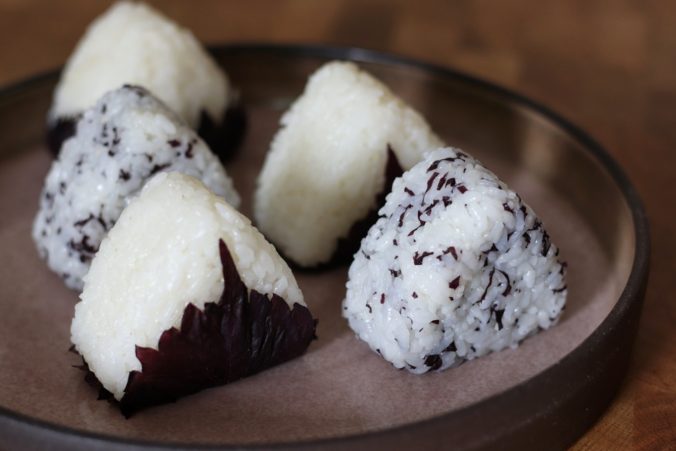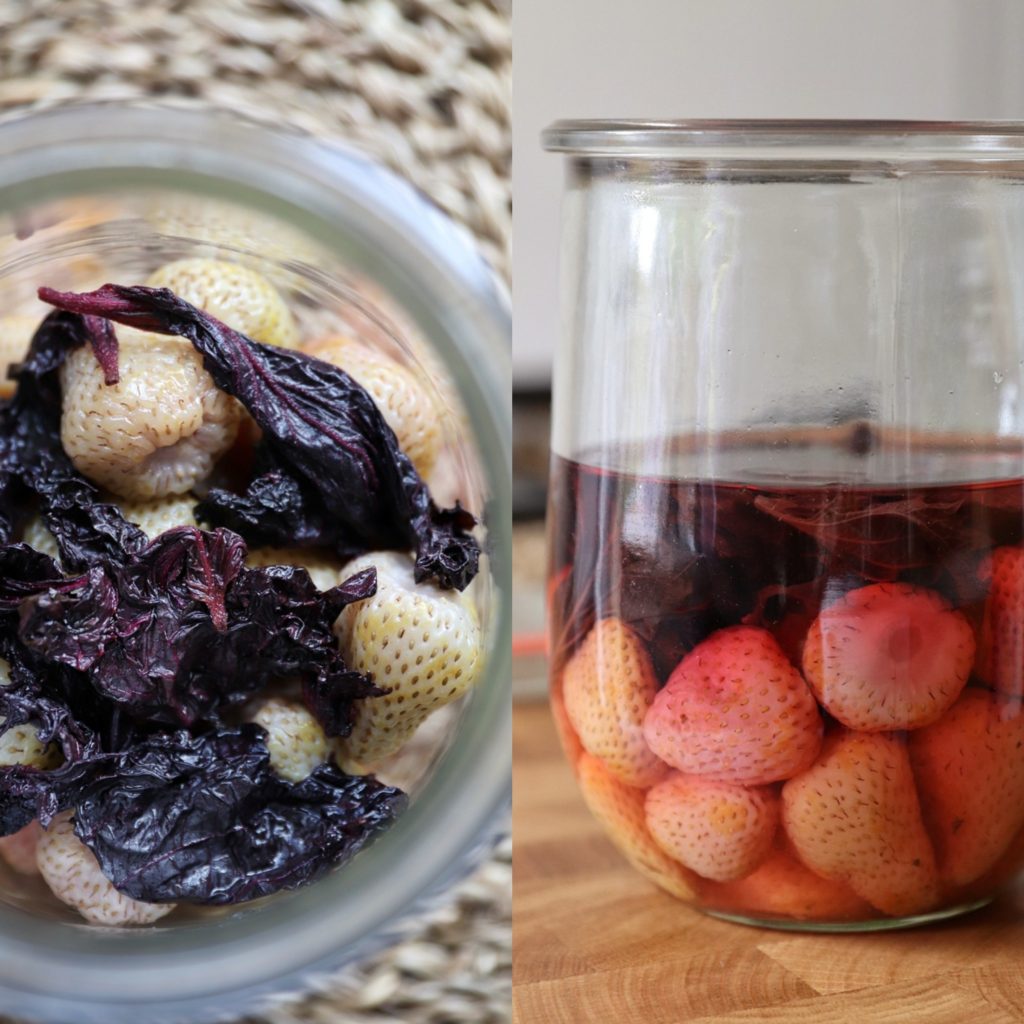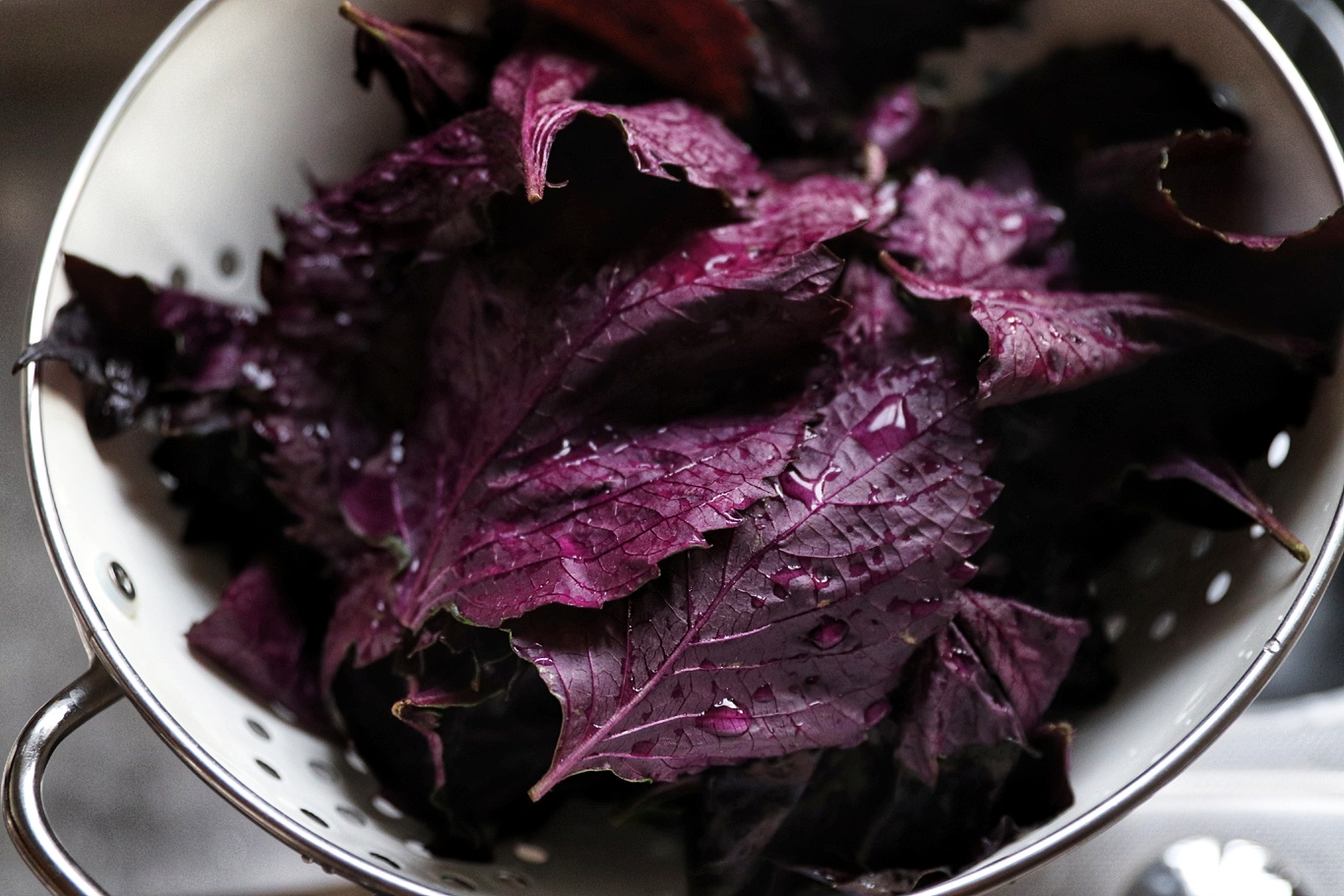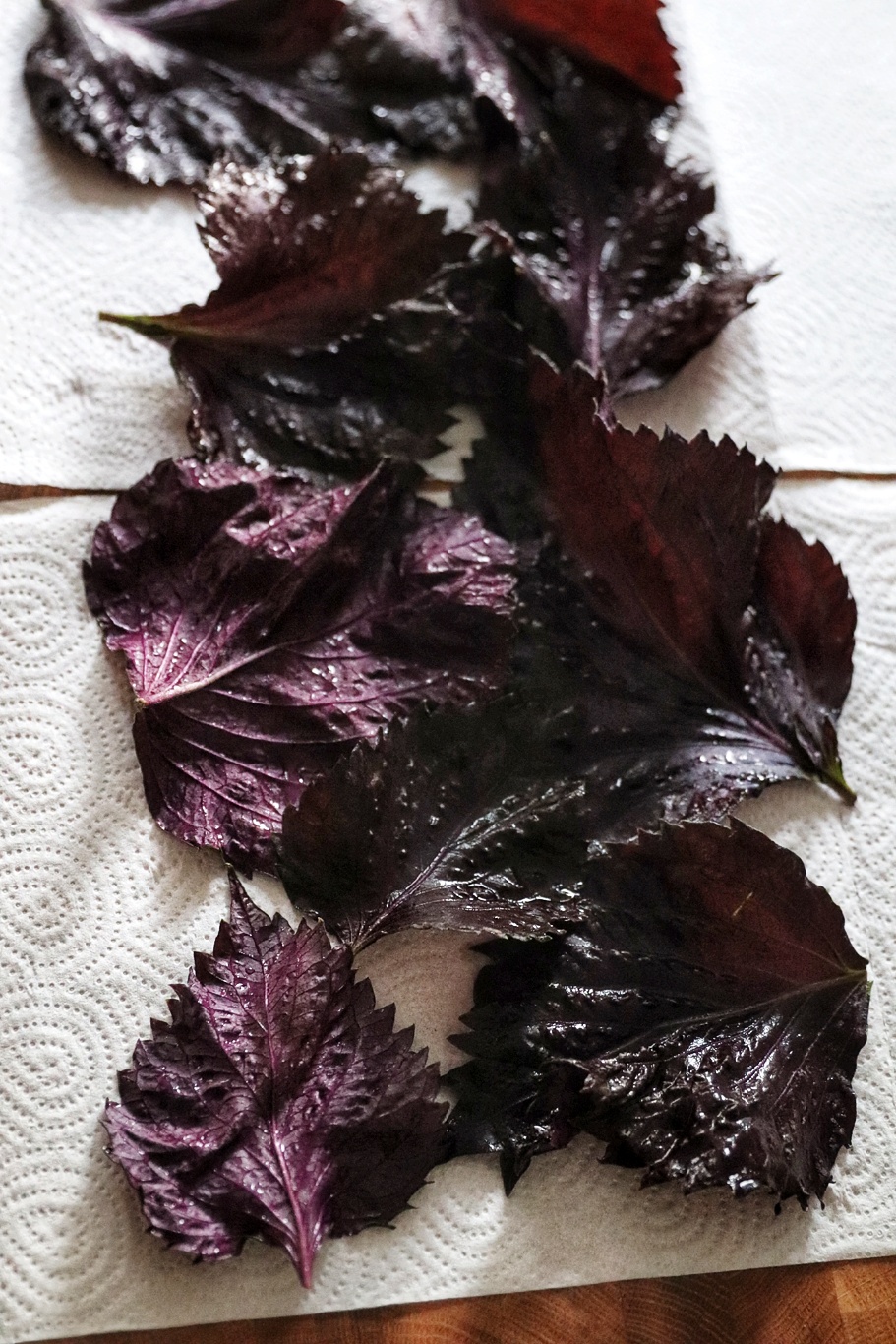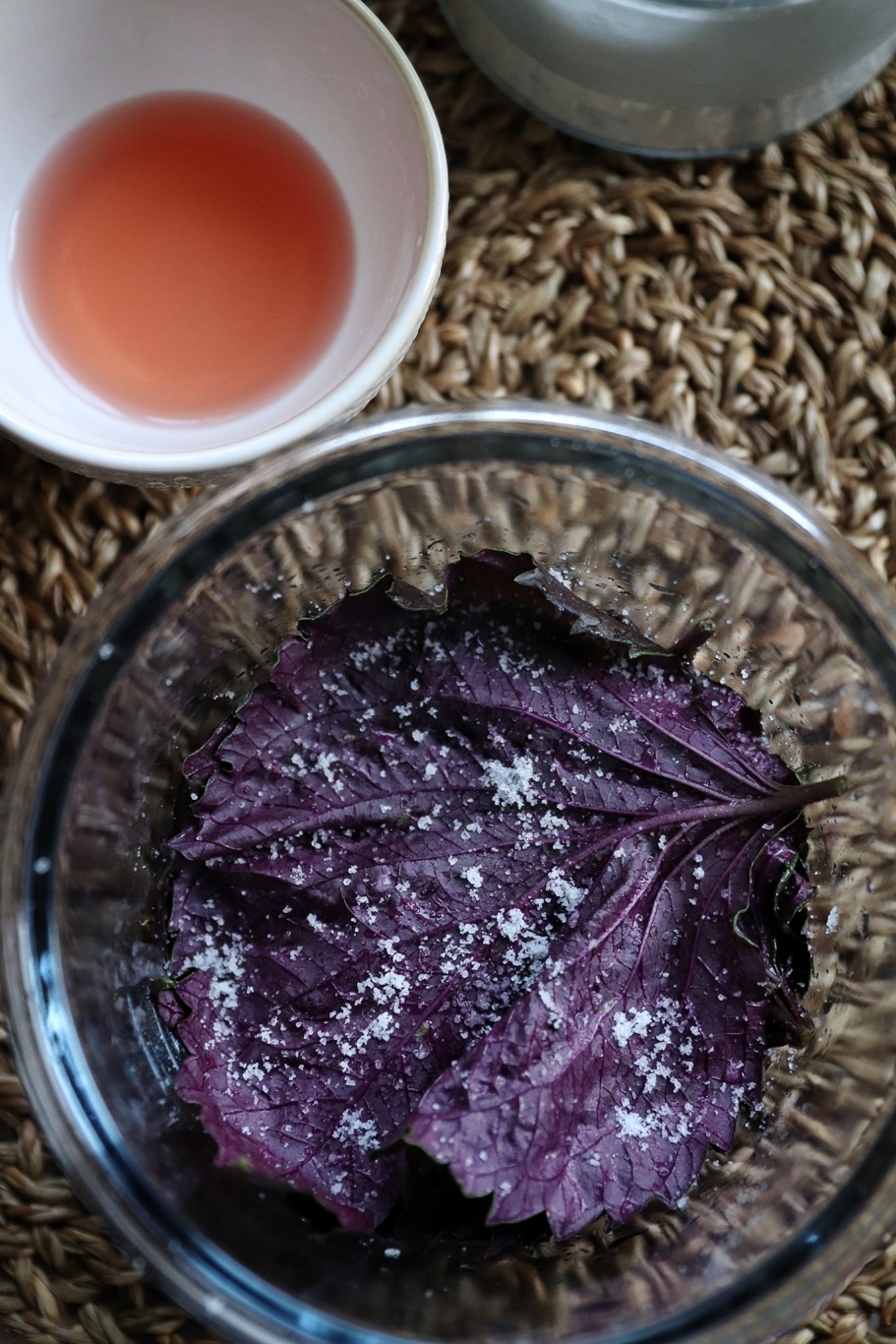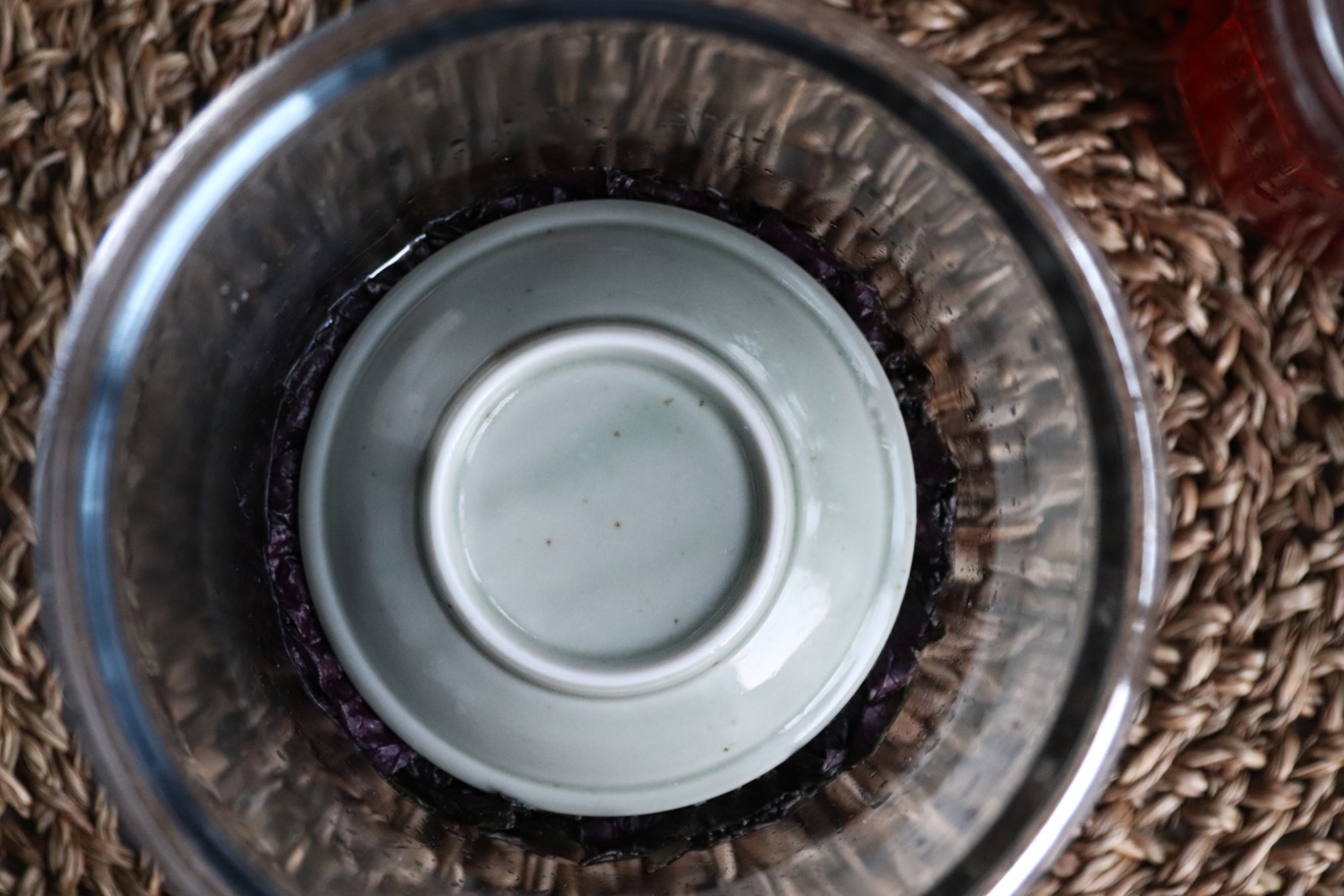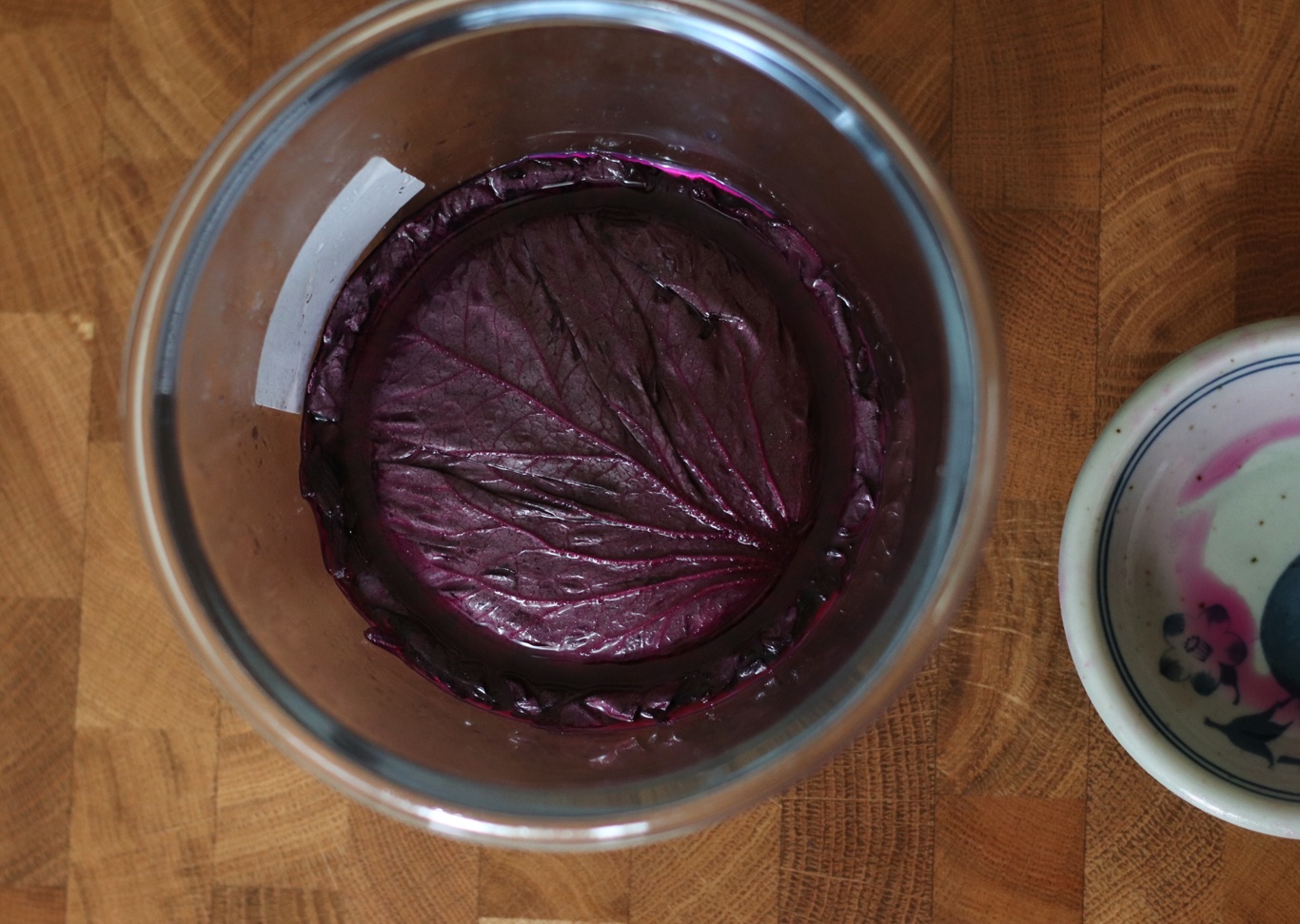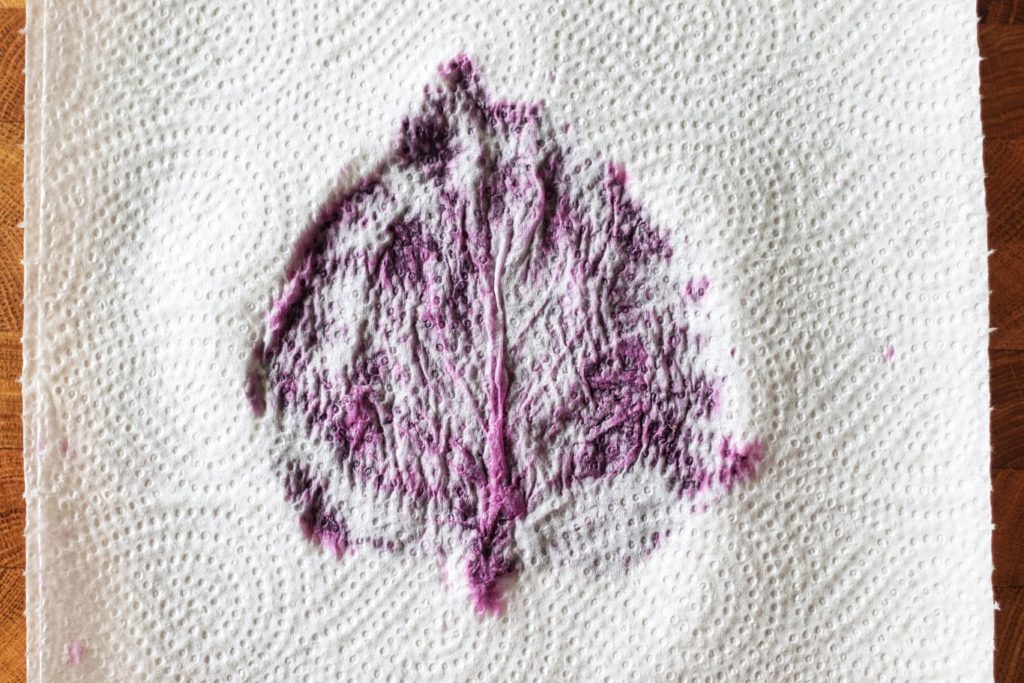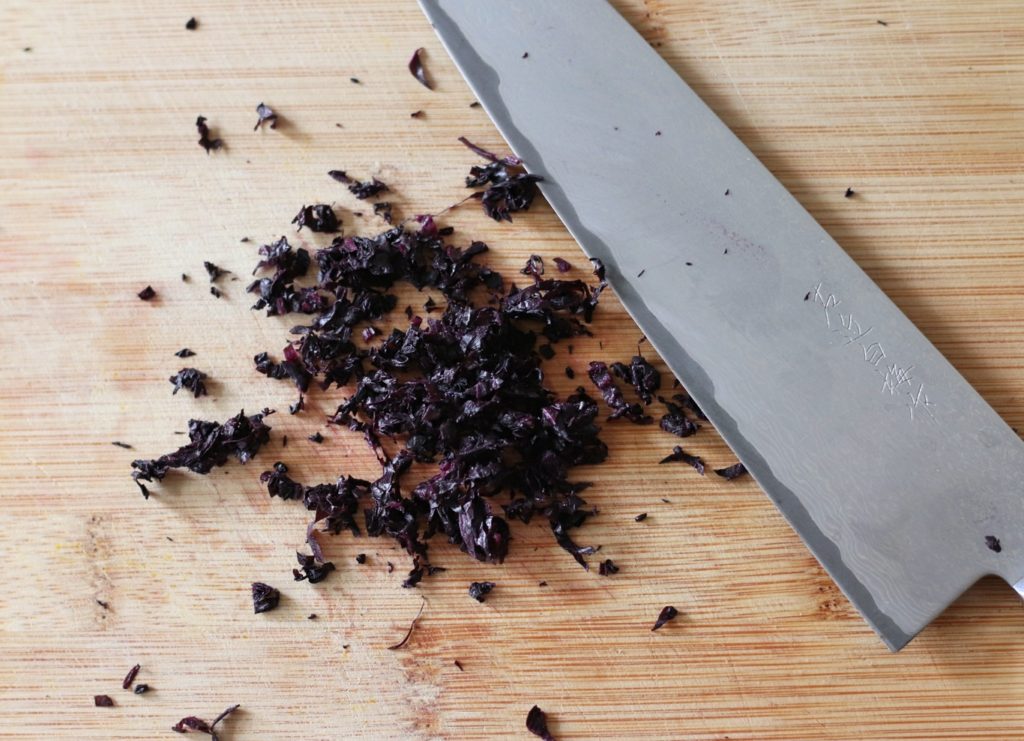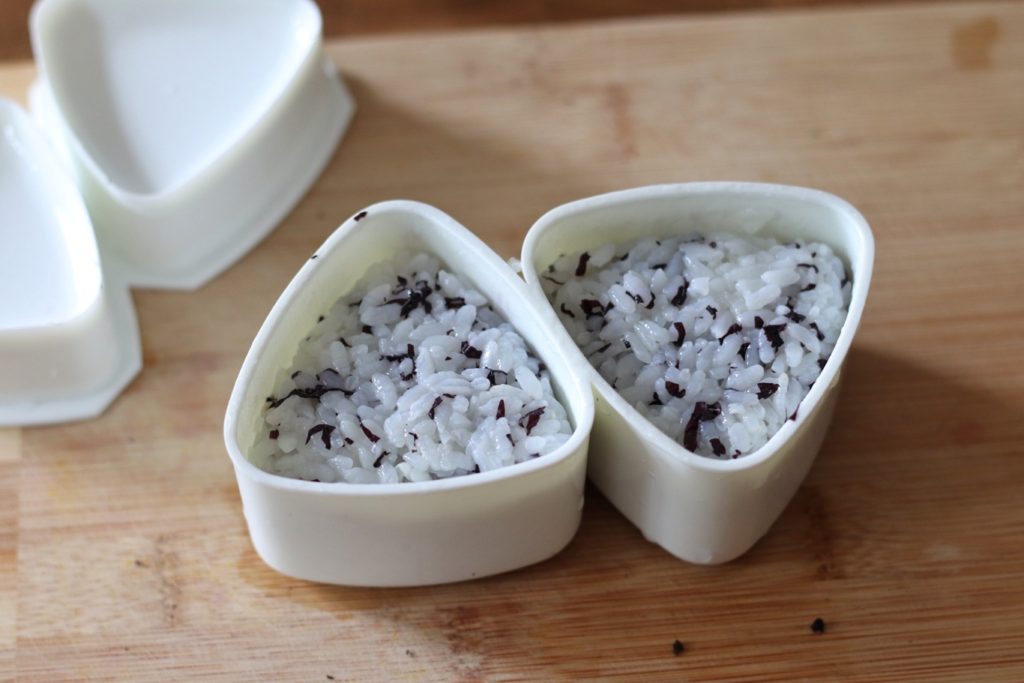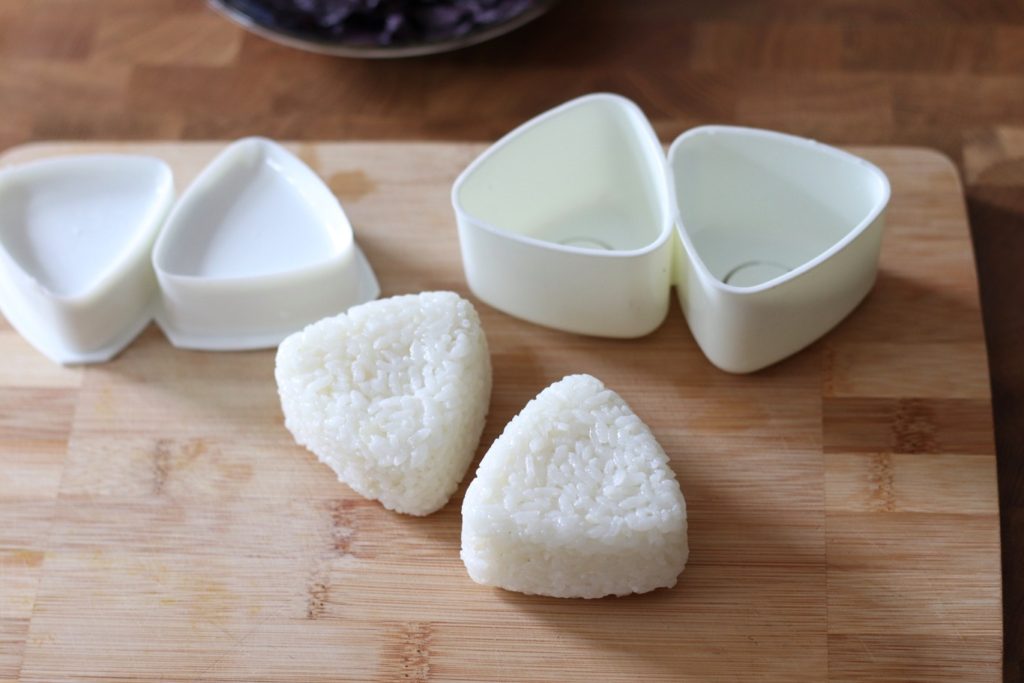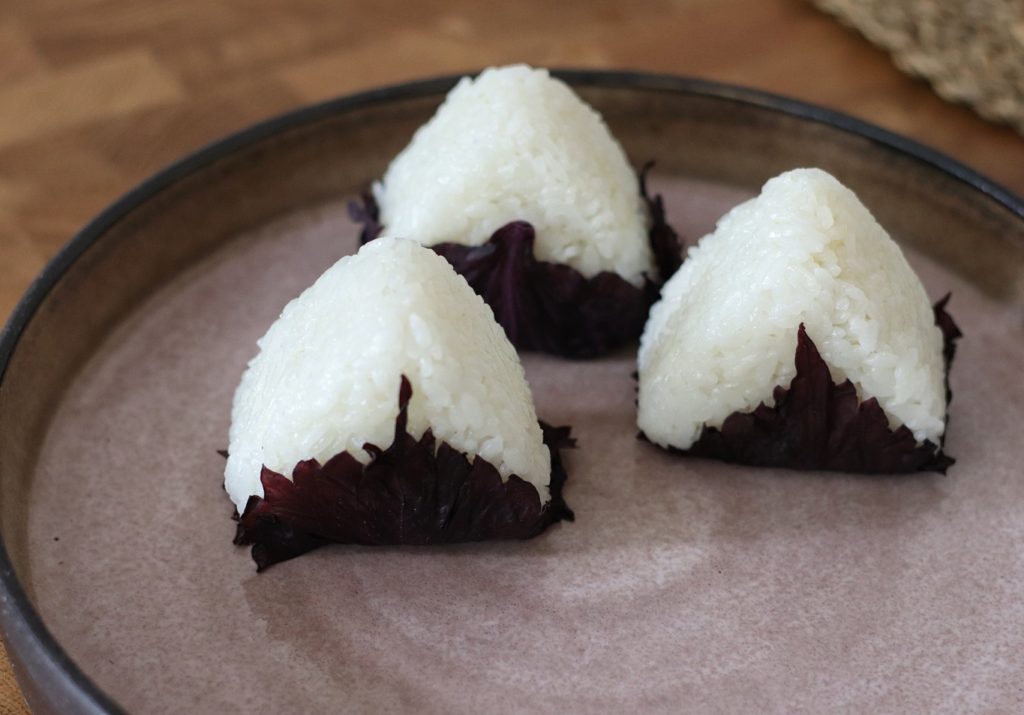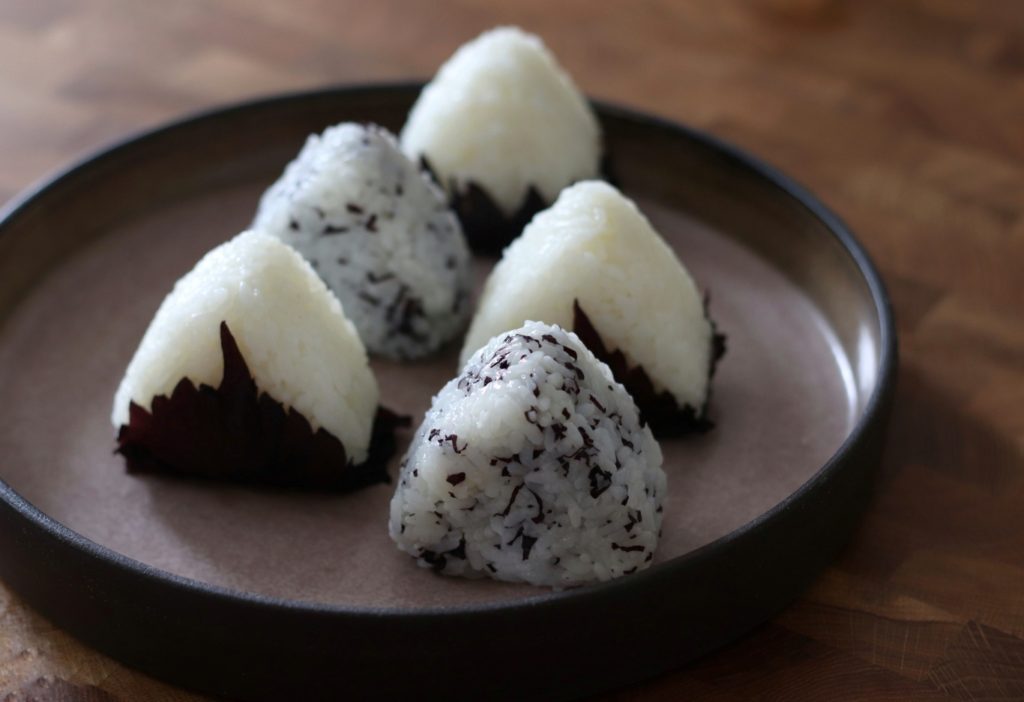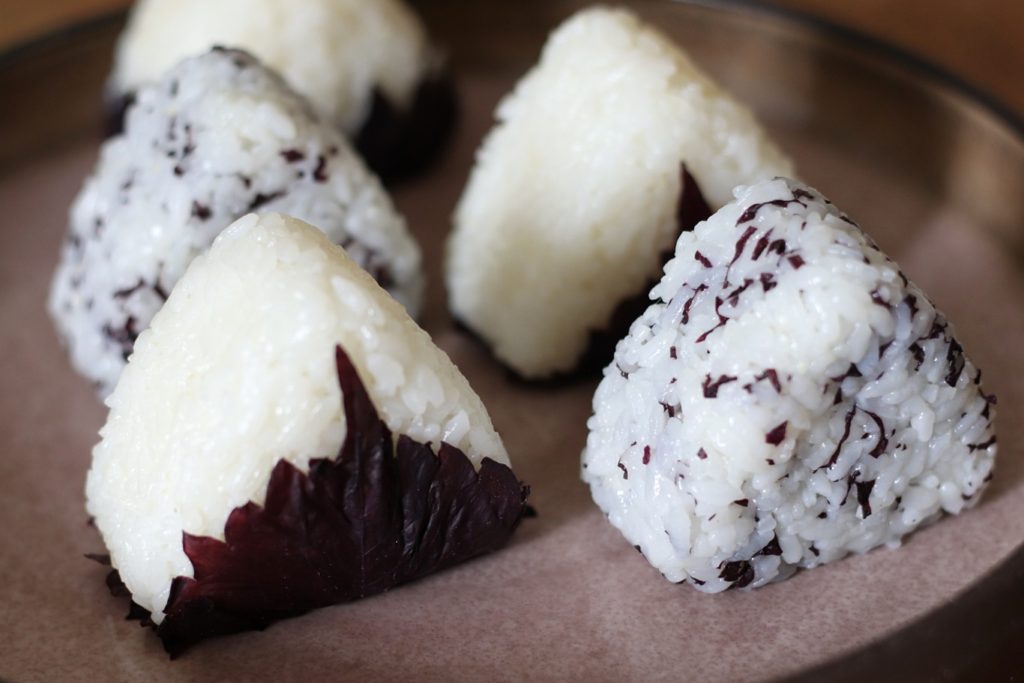Do you know the plant, perilla or shiso? Also called Chinese or Japanese basil. Shiso is an incredible plant, it is a very aromatic because of it’s oils and it has been grown and used widely in Asia. I’m in love with it and using it in my kitchen quite often.
I don’t say it’s an every day ingredient and that you can find it everywhere, but you can certainly buy it in some Asian grocery stores. I tried to grow them from seeds but I didn’t get to much luck with it. Perhaps I started too late in the spring and the weather turned cold before the whole growth, so the leaves fell of. You can try growing them apparently it’s easy!
Because I’m not going to London to often, and I have not seen it yet in Cambridge, last time I bought 2 nice bunches of the purple shiso. I preserved them with salt and I still use the same batch. You don’t need to use a large amount in your cooking as it has a very intense aroma and flavour. I normally use it as a topping for plain rice, it transforms the rice to an even more delicious side dish.
It is a great seasoning for the onigiri rice balls too, it substitutes the dried nori sheets perfectly or gives a very unique taste when is chopped in the rice. I also use the dried forms, called yukari that is made out of the shiso leaves after the umeboshi production.
Last year I tried my hands in making “strawberryboshi”, it was a great success! If you know the umeboshi you can straight away connect to the variation made out of green strawberries. In Japan they use a type of green apricots to make them. The process needs heavy salting and at the end the beautiful colour and flavour comes from the purple shiso leaves.
To make the preserved shiso leaves you only need healthy leaves and good quality sea salt. The recipe, if I can call it recipe, is very simple and you can keep the preserve for nearly forever in the fridge. My twist in here is that I added a few drops from the brine that left over from my strawberryboshi ( in case of the umeboshi called umesu ), but you can just omit this step.
This is how I made the preserved shiso leaves
I would rather write down the method as I have never measured the quantities. You will need the shiso leaves and a good quality fine sea salt. Also prepare a small clean glass jar where you can easily layer the leaves and a some weight that you going to use to weigh down the leaves.
- In the first step, wash the leaves and dry them. In my opinion it doesn’t need to be super dry as the left over water will help to dissolve the salt between the layers.
- Start layering the leaves with the a good pinch of salt, spread it evenly and finish it with the salt.
- Optionally, you can use umesu ( I recommend the Clearspring brand ) brine and add a couple of tsp to the top. Weigh it down ( not to heavy, maybe 3 times as heavy as the leaves ), put the lid on and place it in the refrigerator.
- Leave it for at least 2 weeks and you can start using it. It will last forever in the fridge!
It’s a tasty match with rice! Make onigiri!
For the shiso seasoned onigiri you need 2 portions of cooked japonica rice and some of the the preserved shiso leaves.
- The leaves are quite salty so you need to pat them dry before you use them. Choose a few bigger leaves for partially cover the riceballs and few smaller to chop them up finely.
- Mix half of the rice with the chopped shiso leaves and form onigiris ( rice triangles, see on the pictures below ) with your two wet hands. It is important to wet your hand otherwise it’s impossible to handle the rice. Optionally, use an onigiri maker as I did. I love this tool, it is a very handy little helper in my kitchen.
- Form onigiris from the other half of your rice too and cover them with the leaves as you would do it with the nori.
Onigiri has several different varieties, this one is perfect as a side dish or as an afternoon snack.
Enjoy!
